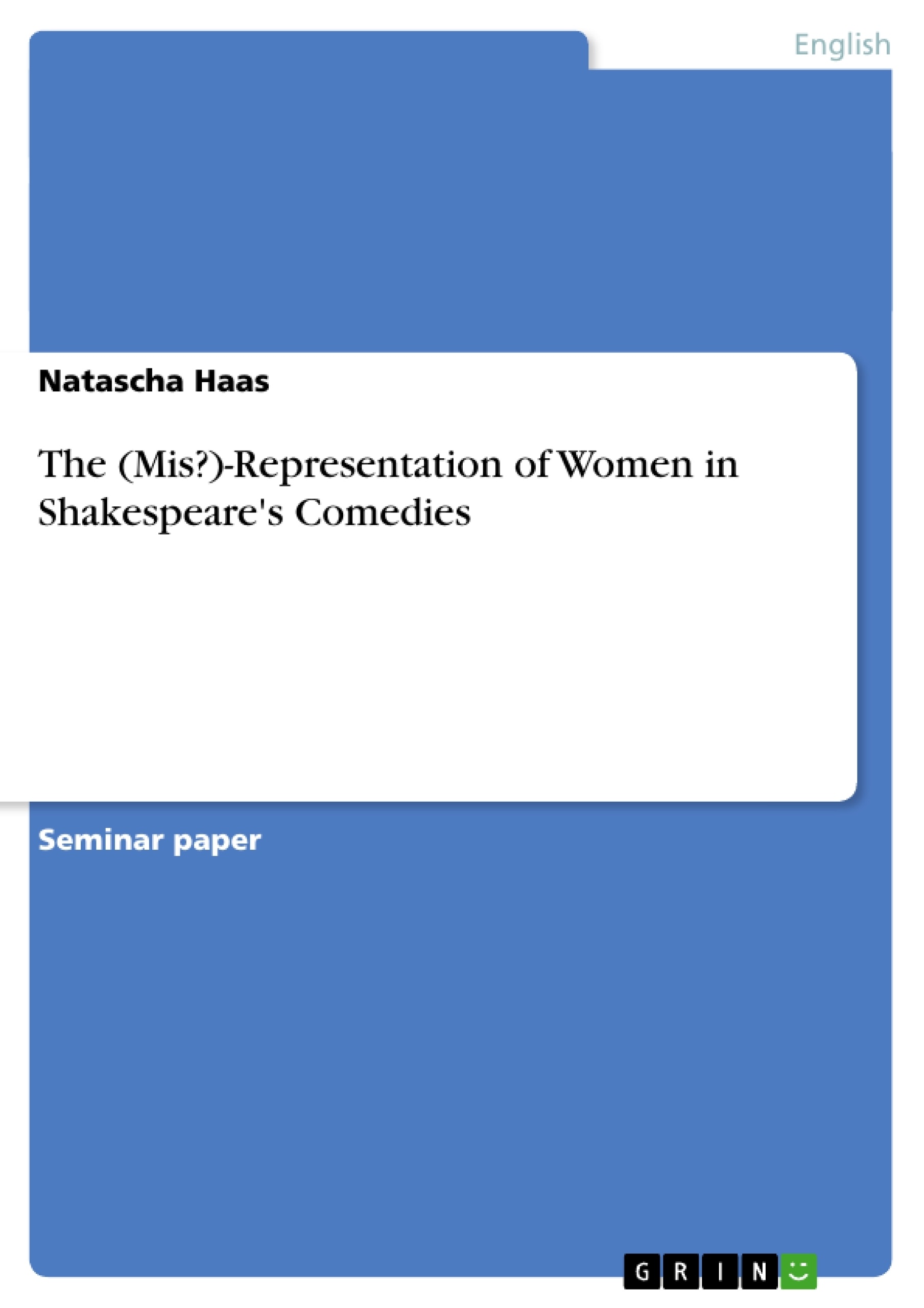Compared to other writers of his time, Shakespeare introduced an extraordinary amount of deep female characters in his plays. Because Shakespeare lived in a time when men played the major part in society and the role of women was basically limited to the household, one could easily come to the opinion that he was a reformer whose views were ahead of the Elizabethan times 1 .
But is this really true? Does Shakespeare criticize the society he lives in by creating these characters, or do they just serve their purpose to make the plays more dramatic? In this paper, I will first give an overview of the role of women in the Elizabethan age and society. After that I will analyse the female characters of three plays we discussed in the course in order to find out if Shakespeare’s views on women diverged from the general view of his time.
Inhaltsverzeichnis (Table of Contents)
- A Introduction
- B Main Part
- 1. Women and society in Shakespeare's time
- 2. Three theses
- 3. Discussion of the plays
- 3.1. The Comedy of Errors
- 3.2. Twelfth Night
- 3.3. Measure for Measure
- C Summary
- D Bibliography
Zielsetzung und Themenschwerpunkte (Objectives and Key Themes)
This paper examines the portrayal of women in Shakespeare's comedies, exploring the potential for feminist critique within his works. The author aims to assess whether Shakespeare challenged the prevailing social norms of his time by presenting complex and nuanced female characters.
- The role of women in Elizabethan society
- Shakespeare's portrayal of female characters
- The relationship between women and power in Shakespeare's comedies
- The influence of societal norms on Shakespeare's creative process
- The interpretation of Shakespeare's work through feminist perspectives
Zusammenfassung der Kapitel (Chapter Summaries)
- A Introduction: This chapter establishes the context of the paper by highlighting the prominence of female characters in Shakespeare's works, prompting the question of whether his portrayal of women reflects a progressive stance or simply serves the dramatic needs of his plays.
- B Main Part: This section delves into the main analysis of Shakespeare's female characters. The author outlines the social and cultural constraints imposed on women during Shakespeare's time, citing biblical passages and scholarly viewpoints.
- 1. Women and society in Shakespeare's time: This chapter explores the societal norms of Elizabethan England, emphasizing the patriarchal structure and the limited roles assigned to women. It highlights the biblical justifications for women's subservient status, noting the influence of figures like Eve and Mary on societal perceptions of women.
- 2. Three theses: This chapter introduces three contrasting theses that frame the author's analysis of Shakespeare's female characters, providing a framework for exploring different interpretations of their roles and significance.
- 3. Discussion of the plays: This section examines the representation of women in three specific comedies: The Comedy of Errors, Twelfth Night, and Measure for Measure. The author investigates the characters' actions and motivations, assessing their portrayal in relation to the broader societal context.
Schlüsselwörter (Keywords)
This paper explores key themes of women's representation in Shakespeare's comedies, examining the social and cultural context of Elizabethan England. It analyzes the portrayals of female characters in specific plays, focusing on the potential for feminist critique and the intersection of gender, power, and societal expectations.
- Citation du texte
- Natascha Haas (Auteur), 2004, The (Mis?)-Representation of Women in Shakespeare's Comedies, Munich, GRIN Verlag, https://www.grin.com/document/27218



